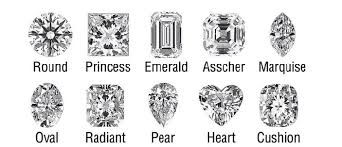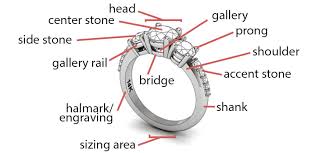Useful Information on Jewellery
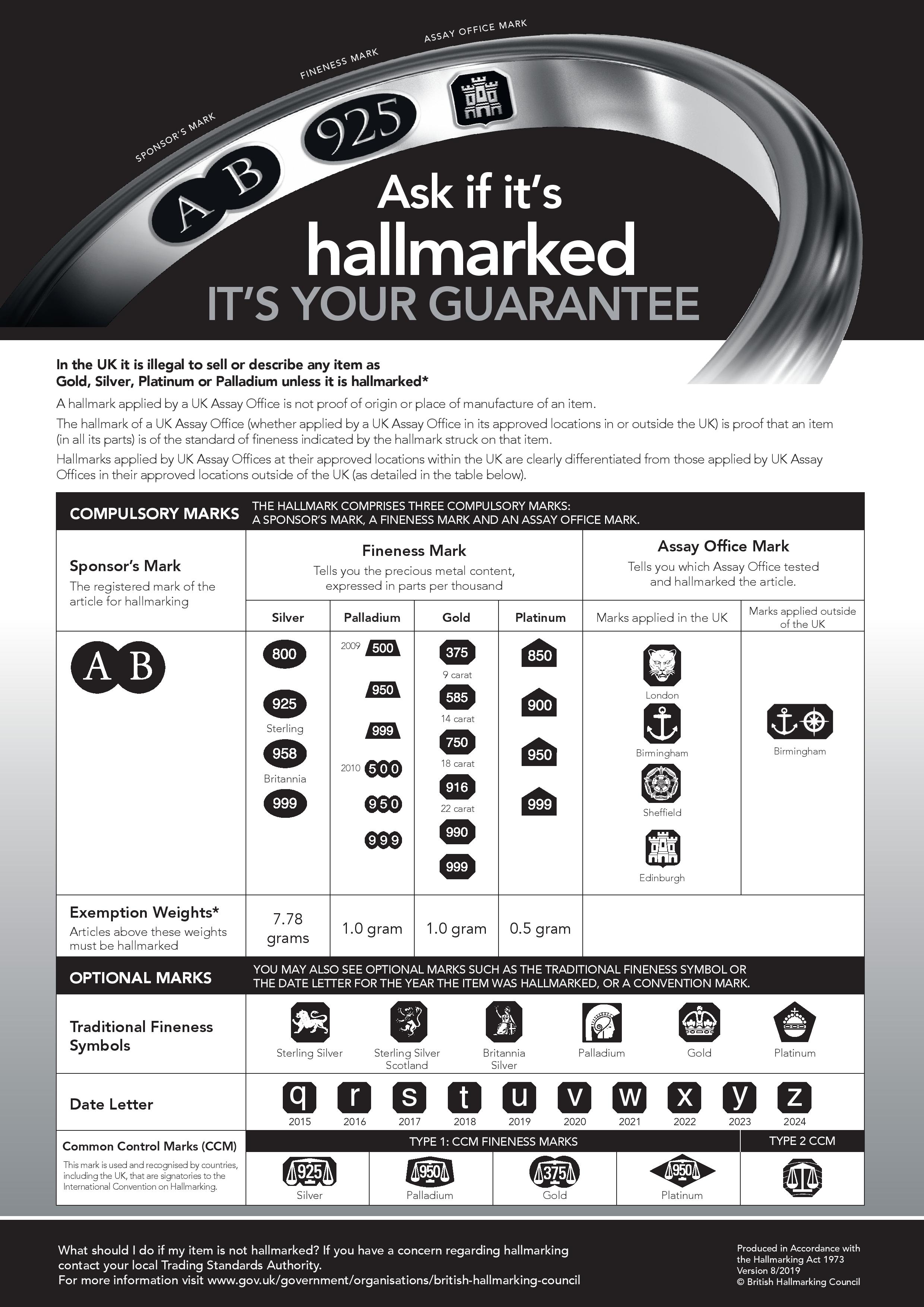
When it comes to manufacturing jewellery and silverware, precious metals (silver, palladium, gold and platinum) are rarely used in their purest form. Instead, they are usually alloyed with lesser metals to achieve the desired strength, durability, and colour.
It is not possible to detect the precious metal content of an item by sight or by touch. It is, therefore, a legal requirement to have items consisting of silver, palladium, gold or platinum independently
tested and then hallmarked before they can be described as such. Items must bear a hallmark at the point of sale, subject to the following weight exemptions:
Silver: mandatory for items above 7.78 grams; gold: mandatory for items above 1 gram; palladium: mandatory for items above 1 gram; platinum: mandatory for items above 0.5 grams.
Hatton Jewellers is registered with the Edinburgh Assay Office, ensuring our precious metal jewellery is compliant with the UK’s hallmarking regulations. All stock is subject to an internal confirmation process to ensure it meets the UK’s hallmarking regulations before it is dispatched to our customers.
For articles that are below the UK hallmarking Act’s mandatory weight for hallmarking, Hatton Jewellers operates a separate due diligence process which involves periodic voluntary testing of items that fall below the mandatory weight to ensure they meet the minimum fineness requirement.
We are an Assay Assured Jewellery Retailer. Assay Assured status is only given to retailers who have been independently audited and verified by Assay Assured which is run and overseen by the Edinburgh Assay Office, and ensures that all precious metal jewellery (except items exempt by weight) are independently tested and hallmarked.
Diamond Care:
We all know that your diamonds are purchased for a lifetime so it is important to look after your jewellery. Cosmetics, Perfumes, Skin oils, and other factors can make your diamonds dull and affect their natural brilliance of them so it is best to keep them clean.
Here are some ways to keep them clean:
- Get a small bowl of warm water and mix with any mild liquid detergent. Brush your jewellery gently with a small soft brush and be careful to scratch the metal and diamond. Rinse thoroughly under water and pat dry with a soft lint-free cloth.
- Use a quick dip liquid jewellery cleaner to keep your diamond jewellery as shiny as ever. You can purchase this here
- Bring your diamond jewellery into Hatton Jewellers shop and we will be able to provide a professional and reasonable clean which you will not be disappointed.
How to care for your Jewellery
- We advise that you clean your jewellery regularly to remove body oils and residues that can dull the shine of your jewellery
- With all jewellery items, we advise that you regularly check for warning signs of vulnerability in your jewellery. This is the check for loose stones prongs or clasps and very worn links. This may prevent costing more money to replace lost and missing stones and clasps. If you ignore this information we can not be held accountable for the damage to your goods.
- When you are not wearing your jewellery store it in a clean and dry place not touching other items. This is to prevent the jewellery from tarnishing and from surface scratches.
- Before swimming - Saltwater can be corrosive to your jewellery item and chlorinated water can have a very negative impact on the item and make the metal erode or even dissolve. If the metal is gold platinum or silver (especially hollow items) they will be affected and will slowly erode resulting in a defected jewellery piece. If you ignore this information we can not be held accountable for the damage to your goods.
- Exercising - We advise removing jewellery when exercising mostly chains as they can easily get caught if they are long and snap. Also, body moisture can dull the shine of your jewellery. Wearing rings is not such an issue however they may still get scratched.
- Gardening - When doing gardening or outdoor activities which involve using your hand, small rocks can be abrasive and can permanently damage the appearance if marked. Sometimes if this is damage to gemstones or diamonds it can be costly to repair or irreversible damage. If you ignore this information we can not be held accountable for the damage to your goods.
Cleaning your Silver Jewellery
You may find your silver jewellery tarnish over time. This is because it reacts with sulphur in the air and many chemicals such as perfume and hairspray, cleaning products, and chlorine may cause your jewellery to tarnish more quickly or discolour it so try and avoid getting your jewellery in contact with chemicals.
Light tarnish is easily removed by using warm soapy water and brushing gently with a soft old toothbrush. Rinse in cool water and dry carefully with a soft lint-free cloth. Another way to keep your silver jewellery shiny is to use a silver cloth. You can purchase silver clothes here from here.
The 4 C's
Colour, Clarity, Carat and Cut are key when it comes to choosing the right diamond jewellery for you.
Here is a quick guide to help you understand buying diamonds:
Colour:
Every diamond is unique and you will find that diamonds mostly appear colourless however many actually contain subtle shades of yellow or brown. The closer a diamond is to having no colour, the more valuable it becomes. Very few are truly colourless, and these are very rare. Diamond colours are rated from D – S-Z.
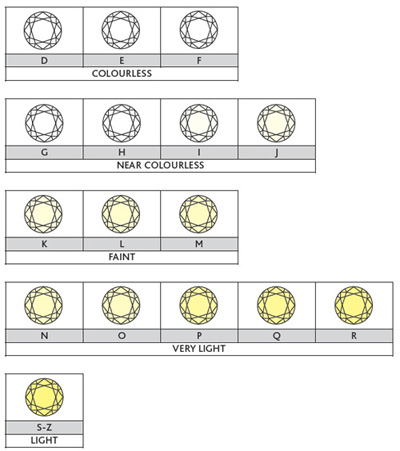
Cut:
Diamonds are cut by skilled craftsmen to bring out the very best. The cut is based on the proportion, relationship, angles and surfaces known as facets. Cut can also refer to the diamond shape, the most popular diamond shape is round brilliant cut. You can browse our online diamond selection here. A diamond's brilliance is controlled by the quality of the cut and there are three main cutting styles:
- Ideal Cut
- Deep Cut
- Shallow Cut

Clarity:
When light enters a diamond it is reflected around. Small inclusions or marks within the diamond can affect this flow of light. There are not many diamonds that are fully clear but the fewer inclusions or marks in the diamond, the greater the clarity and the more valuable it is.
- Diamonds that have extremely slight inclusions, are graded VVS1-VVS2.
- Diamonds that are very slightly included are graded as VS1-VS2.
- Diamonds that are graded S1-S2 feature only slight inclusions which may not be visible to the naked eye.
- Any diamond that has inclusions that is visible to the naked eye is P1-P3 although P1 will have fewer inclusions than P3
For more information on diamond buying please enquire here
Carat:
Carat is the weight of a diamond and does not necessarily reflect its size. Larger carat weights are rare and more valuable than lower carat weights. However, the value of a diamond can also be affected by the colour, clarity and cut of the diamond.
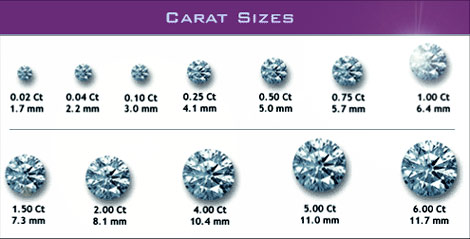
General Information on:
Claw Settings
The claw setting or clasp setting is perhaps the most traditional and frequently used of settings. Having said that, by varying the shape, number and orientation of the claws a more contemporary feel can update a traditional look.
Rub Over Settings
Generally considered to be a more modern setting, the rub over setting produces a neat, clean appearance. The gemstone is secured all the way around the stone by metal that is pushed up and smoothed over the stone and this produces a very safe setting as there are no claws to snag and pull up.
Corner Settings
A corner set ring is an interesting alternative to a more traditional type of setting. It is a kind of hybrid between a claw setting (with the stone visible pretty much all the way around) and the rub over setting (with the stone completely covered up from the sides. Corner settings have advantages over traditional claw settings in that there is less risk of the claws moving.
Pave or Grain Settings
Pave setting was traditionally used in Victorian jewellery but is making something of a comeback in recent years. Small diamonds are grouped together to produce a large amount of sparkle Pave is the past participle of the French word 'paver' to pave. The clusters of tiny gemstones that make up a block of pave set stones are held in place by tiny beads of metal that clamp the stones down in what looks like a continuous block of gemstones.
Star or Illusion Settings
Star settings are similar to the traditional 'illusion' settings used in Victorian times but reworked into a modern style, so star settings can be used in an antique style or in a very contemporary style depending upon your design. They have the added advantage of being extremely successful in increasing the apparent size of the gemstone.
Channel Settings
Channel setting is a traditional style of setting frequently used in 'full', 'V' or 'half' eternity ring designs. In the same way that pavee set stones produce a block of sparkle, channel set stones do the same thing but in a more exact and geometrical looking way. Channel set stones are flush set (ie the top of the stones does not protrude beyond the top of the metal around it)
Tension setting
A tension setting is a version of the rub over setting where the setting has in effect been cut away to allow the side or end girdle of the stone to be visible. The stone is properly secured at either end yet the side and back of the stone are still visible.
Invisible Settings
An invisible setting is a great way to set a small accent stone. Tiny sections of metal are pushed up by the stone setter around the gemstone to produce an effect of the stone appearing to just sit in the metal.
Grain Settings
As with invisibly set gemstones, grain set stones are an ideal way of setting small accent stones. grain set stones are not secured at 4 equally spaced points around the stone which produces an apparent square shape.
Open Tip Settings
An open tip setting is a version of the rub over setting. Like the rub over setting, a lip of metal holds your gemstone in place all the way around the stone, but unlike the rub over setting, the tip at the bottom of the stone is visible from the side.
Find Out Your Finger Size
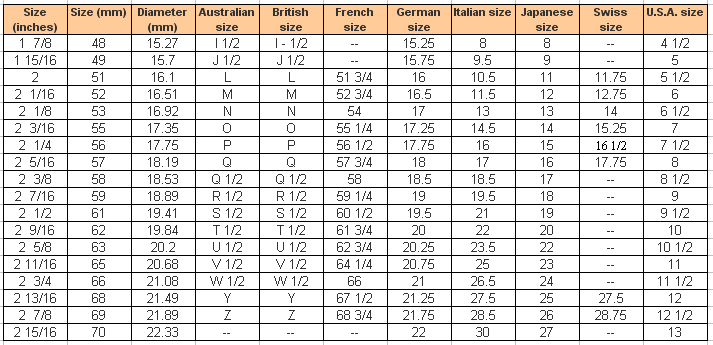
Necklaces Lengths guide
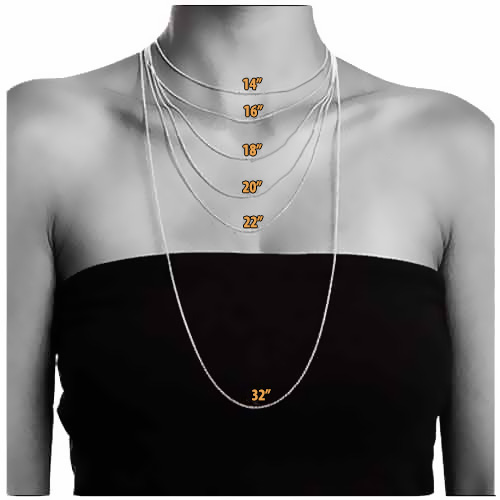 |
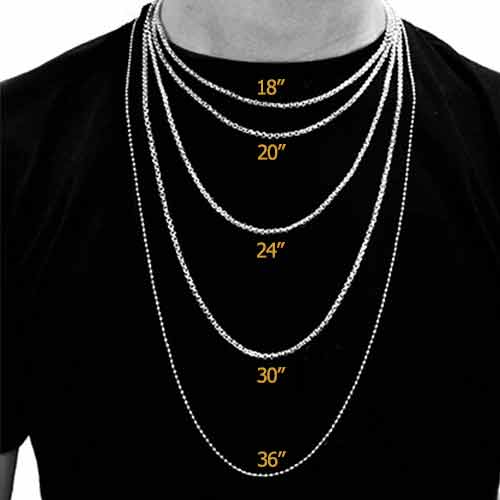 |
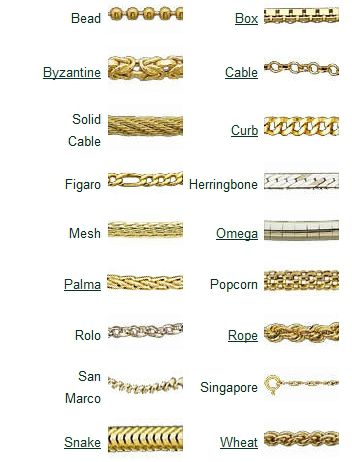
Learn before buying it
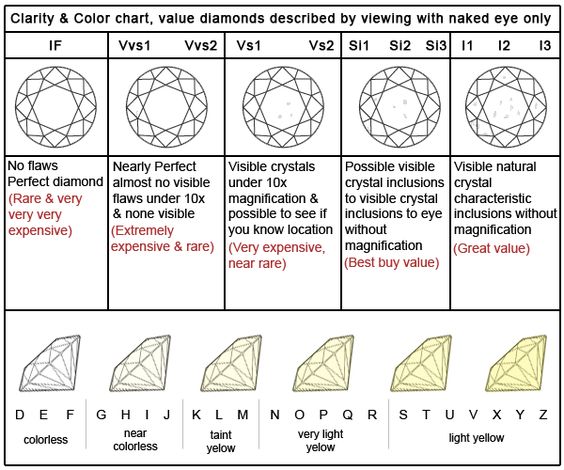 |
|
||
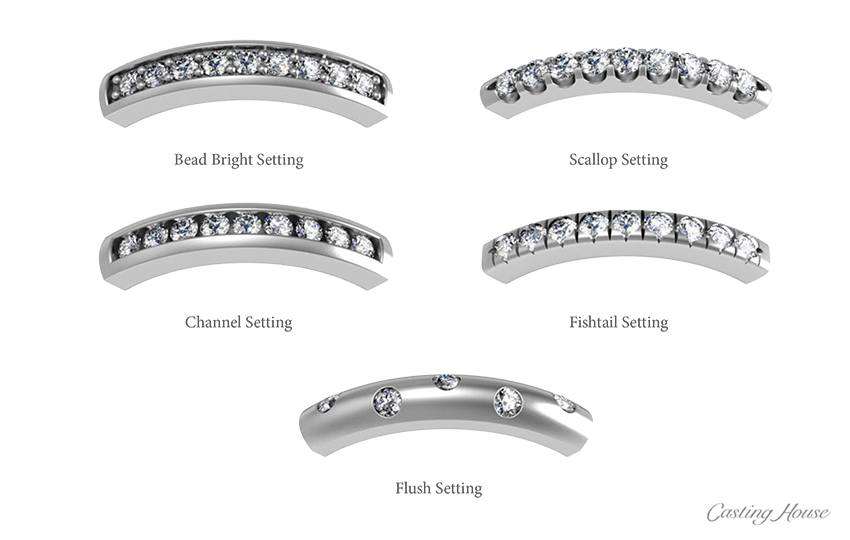 |
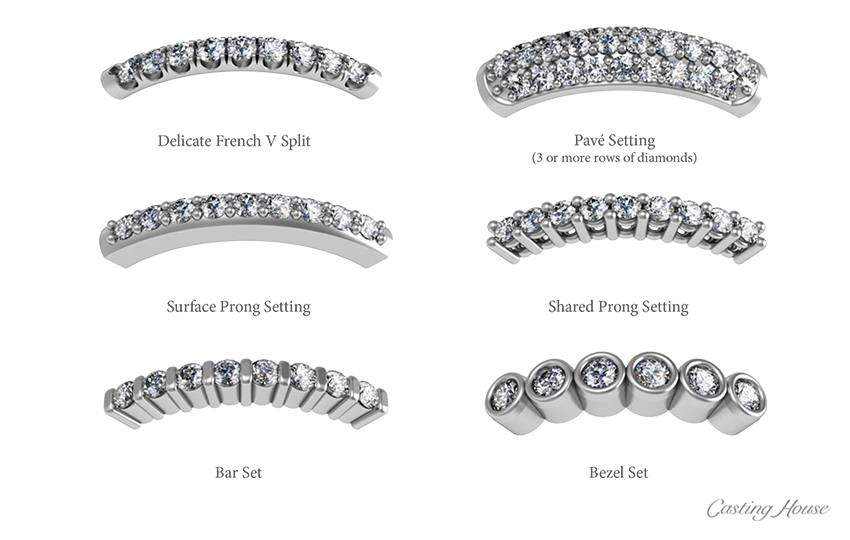 |
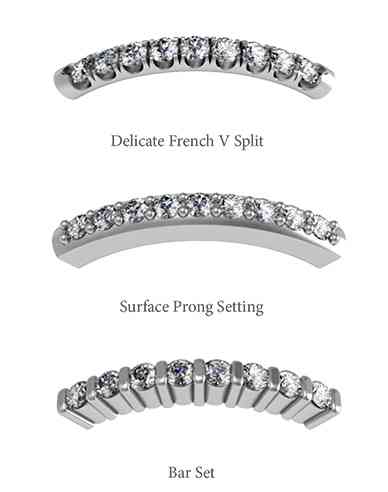 |
Wedding Bands
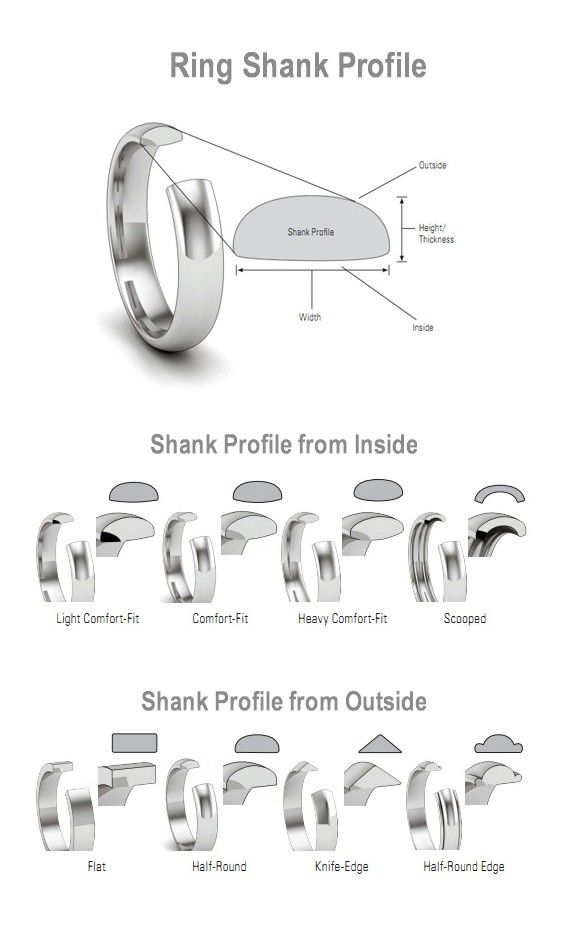 |
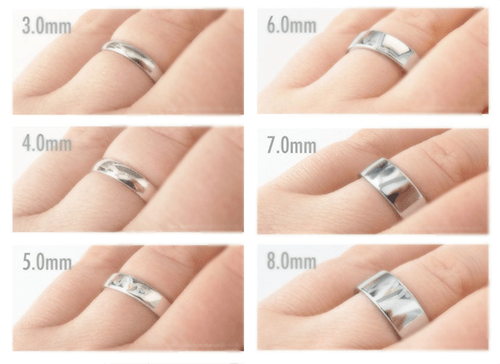 |
Jewellery Finishing
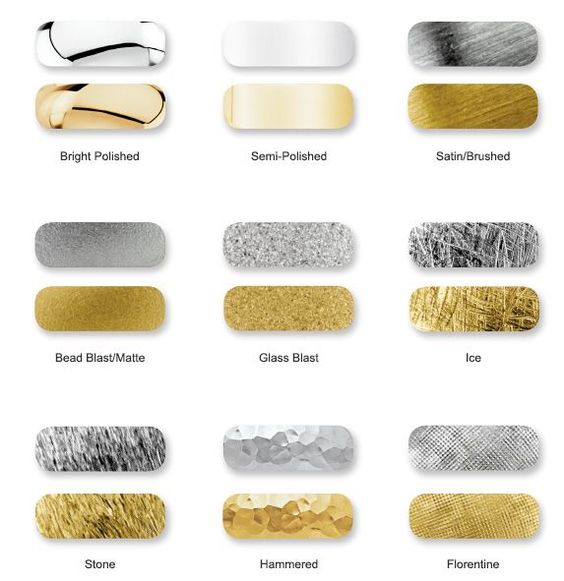
All About Birthstones
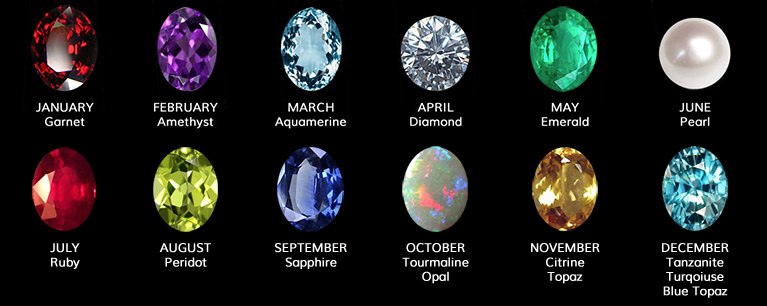
The History of Birthstones: The idea of birthstones can be traced back to the Bible. In the book of Exodus, the breastplate of Aaron is described as having 12 gemstones representing the 12 tribes of Israel.
Later, in the 1st and 5th centuries, the respective writings of Flavius Josephus and St. Jerome connected the 12 stones with the 12 signs of the zodiac. They believed that each gemstone, corresponding with a sign of the zodiac, held powers when worn during the sign. Today, we only consider birthstones appropriate when corresponding to one’s own astrological sign.The idea that everyone should only have a birthstone for their astrological sign can be traced back to the 18th century when Jewish gem traders made their way to Poland. In 1912, the National Association of Jewelers created the list of birthstones which has only been updated to add new stones a small number of times.
January: Garnet - January’s birthstone is the deep red garnet. The stone is believed to bring light and provide guidance during difficult times. The stone is said to promote self-esteem, give energy, and protect the wearer during travel.
February: Amethyst - The soothing shade of amethyst promotes peace, serenity and self-control. As such a peaceful stone, it’s no surprise that the Pope always wears an amethyst ring. The stone also promotes sobriety, coming from the Greek word “amethystos,” meaning sober.
March: Aquamarine - It used to believe that drinking water that had aquamarine soaking would cure heart, liver and stomach diseases and sailors believed the stone would protect them at sea. The stone is thought to promote courage, happiness and mental clarity.
April: Diamond - Diamonds are obviously known as a symbol of love and are one of the most popular gemstones in the world. The diamond birthstone similarly is a symbol of love and courage. The stone is also thought to give the wearer strength and endurance.
May: Emerald - The emerald is a stone of passion, beauty, love and fertility. Ancient Romans associated the stone with Venus, the goddess of love and beauty. The stone is also believed to promote wisdom and patience.
June: Pearl & Alexandrite - The Ancient Greeks believed that Aphrodite’s tears of job hardened to become pearls. Wearing pearls has a calming effect that allows for creativity. Alexandrite gives a sense of wonder when watching the colours change in the mysterious stone. It is believed to improve intuition and imagination.July: Ruby - The ruby is a highly valuable stone that traditionally protects from evil and today symbolises love and passion. The stone is believed to be high energy, promoting enthusiasm, success and strength.
August: Peridot & Spinel - Peridot, sometimes called the emerald of the evening, is believed to protect the wearer from nightmares because it brings them to light. Spinel is often confused with ruby but comes in a wide variety of colours. The stone is believed to protect the wearer and relieve sadness.
September: Sapphire - Sapphire, known for its deep blue colour, also comes in a wide variety of colours. The stone has a history of being a favourite to royalty and religious figures as the stone symbolises purity, wisdom, loyalty and faith.
October: Opal & Tourmaline - Opal is thought to promote confidence and white warding off evil. The stone symbolizes creativity, innocence and hope. Tourmaline comes in many colours and is believed to protect the wearer from harm and promote creativity.
November: Topaz & Citrine - Topaz is a stone symbolizing love while also giving strength and protection to travellers. Yellow topaz is thought to heal the body and mind. Similarly, citrine was used by travellers who thought it was a protection from snakes and evil. Now the stone is associated with success and prosperity.
December: Turquoise - Turquoise is a symbol of love, success and good fortune. It is believed that turquoise keeps away evil spirits while protecting the wearer from harm and relaxing the mind.


